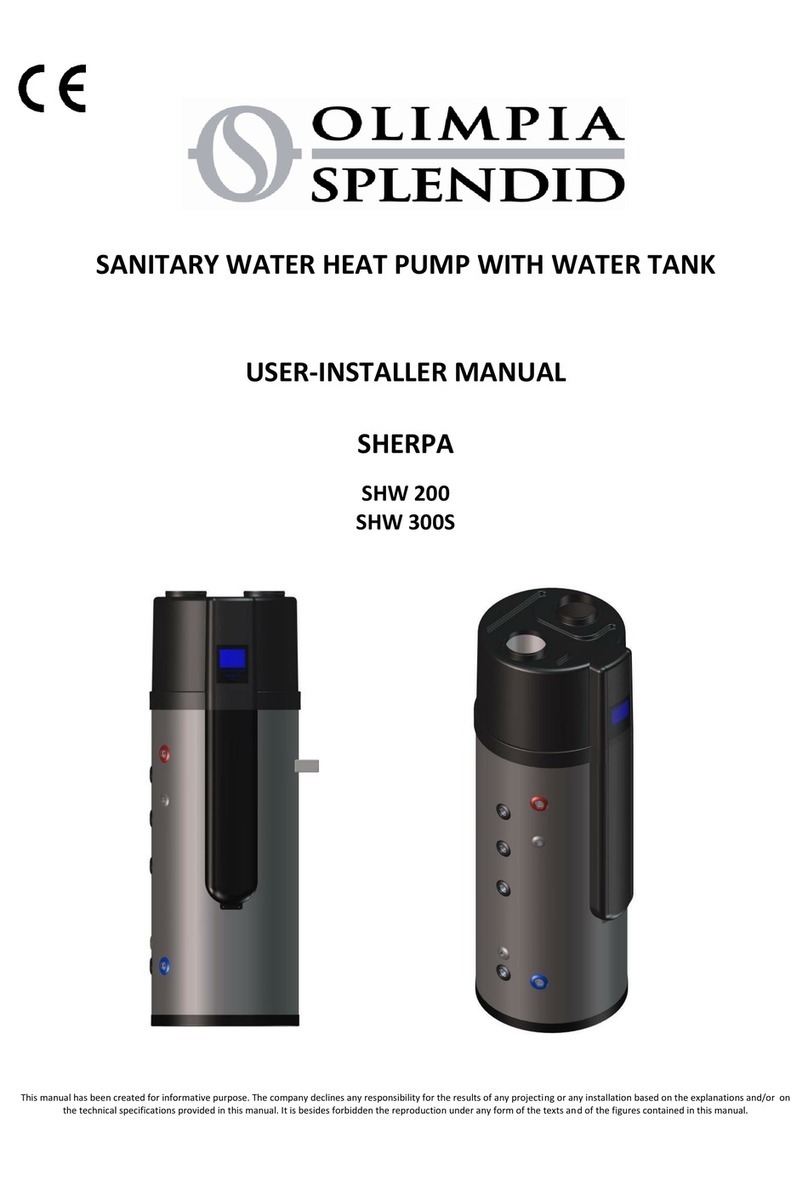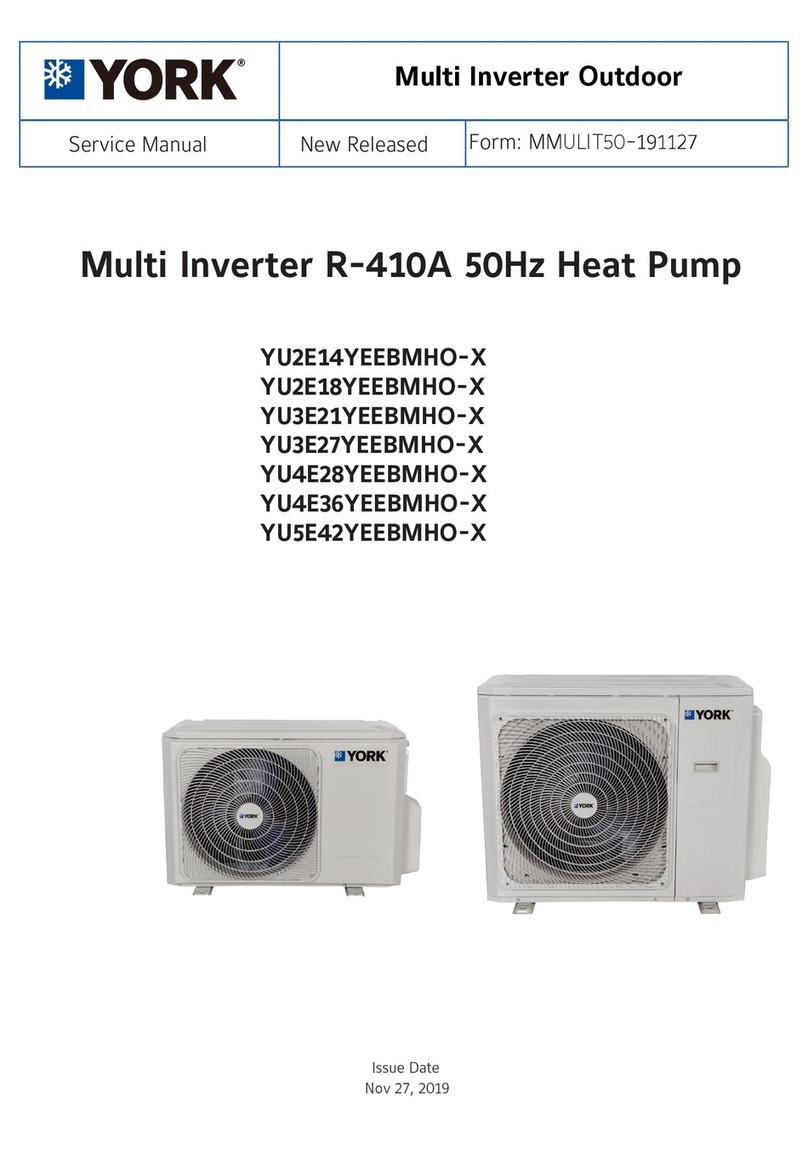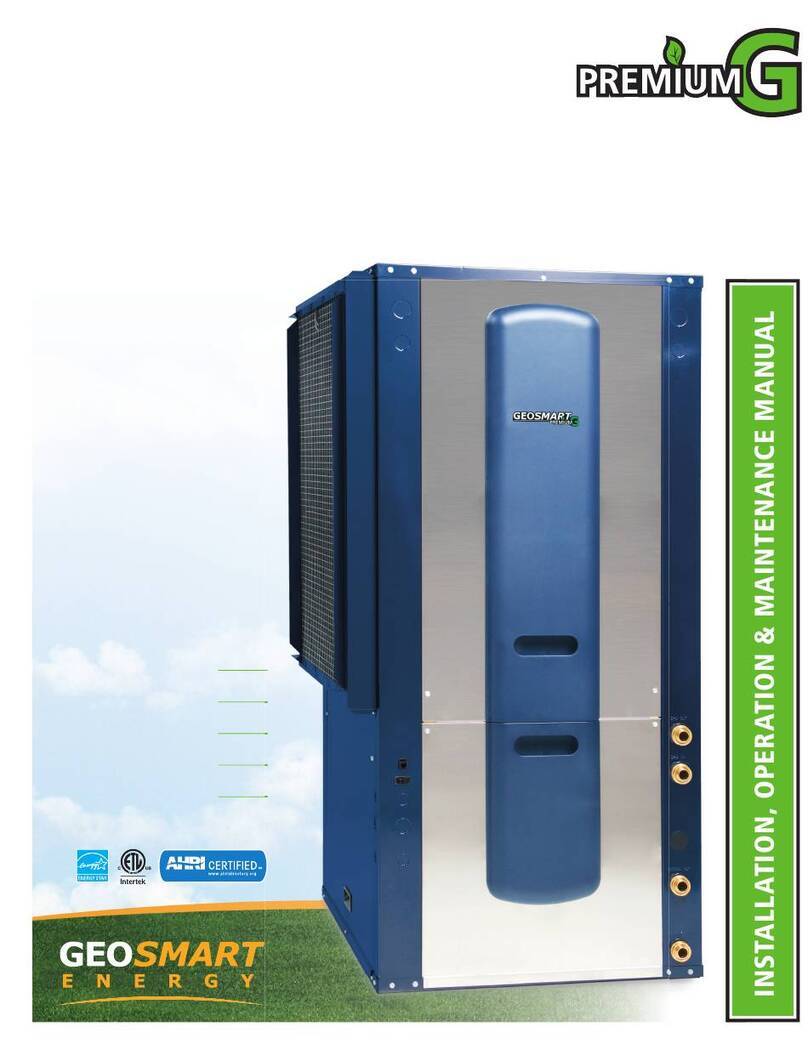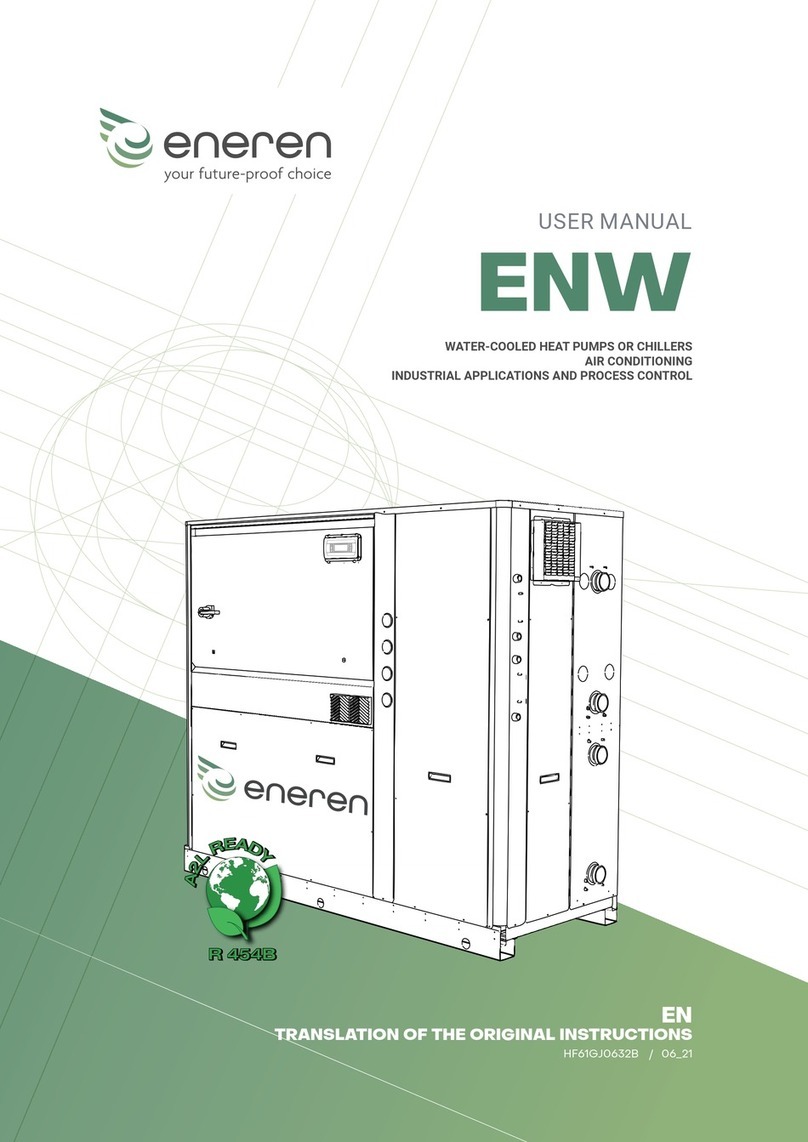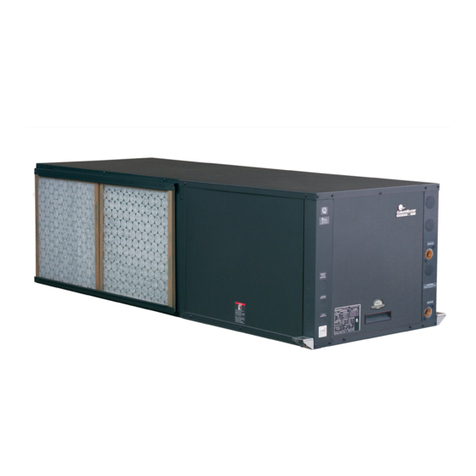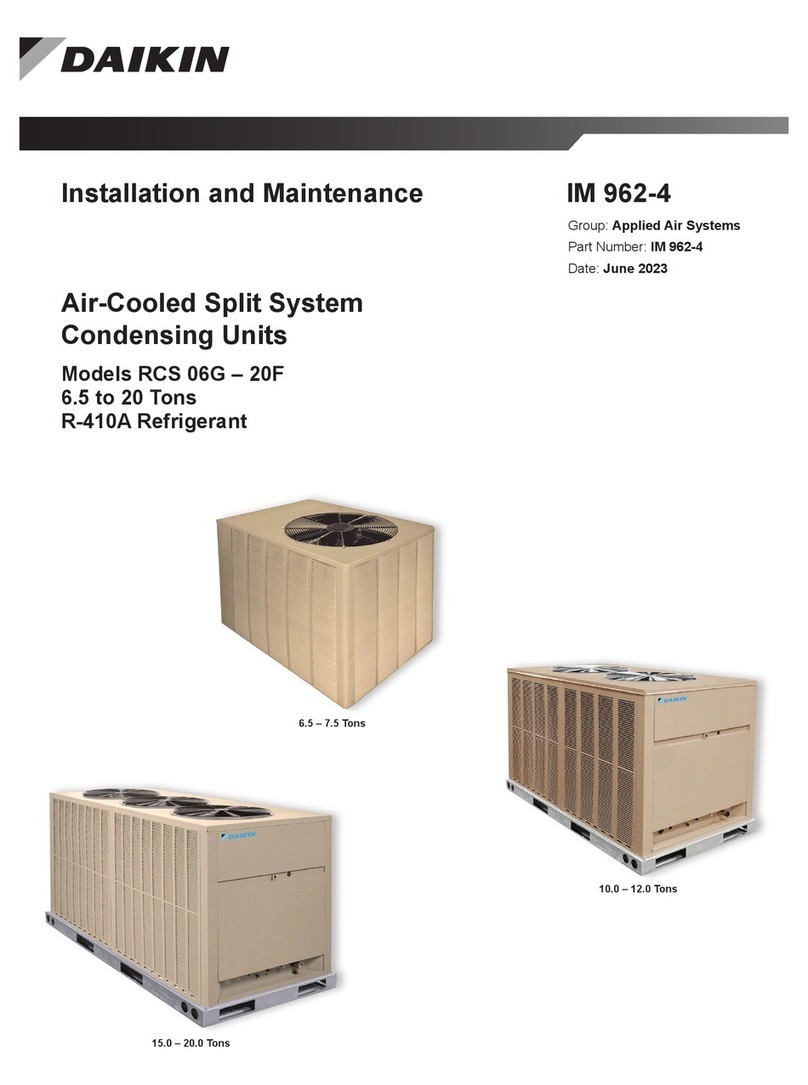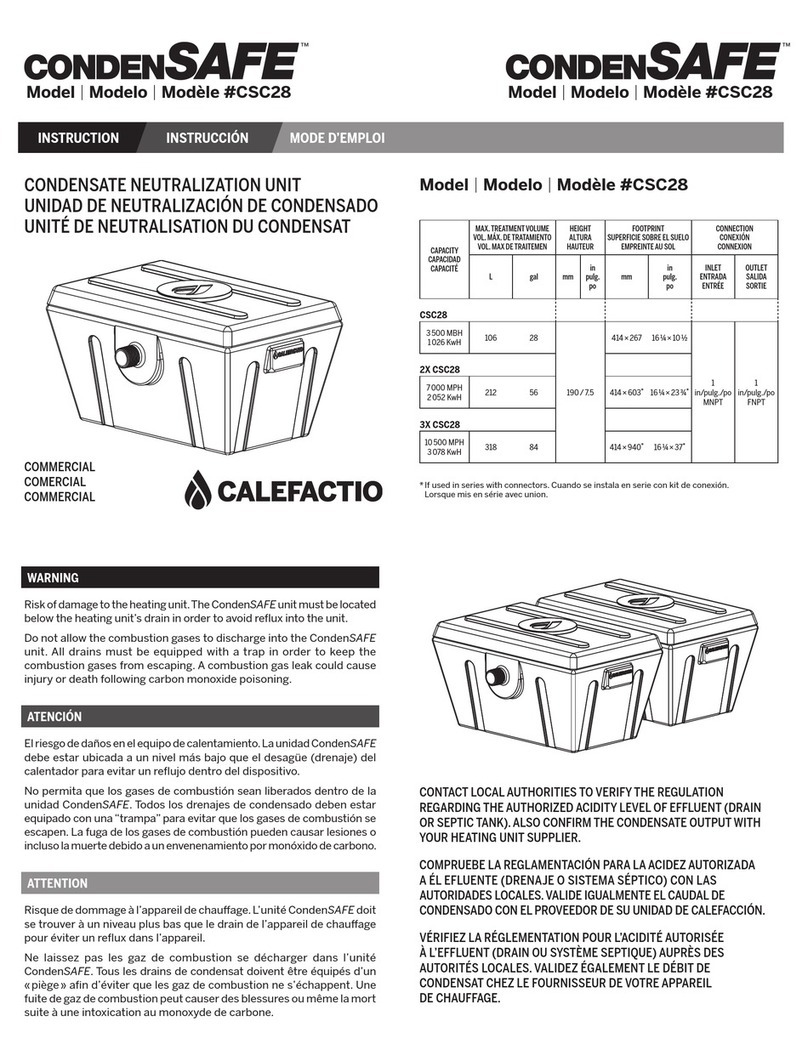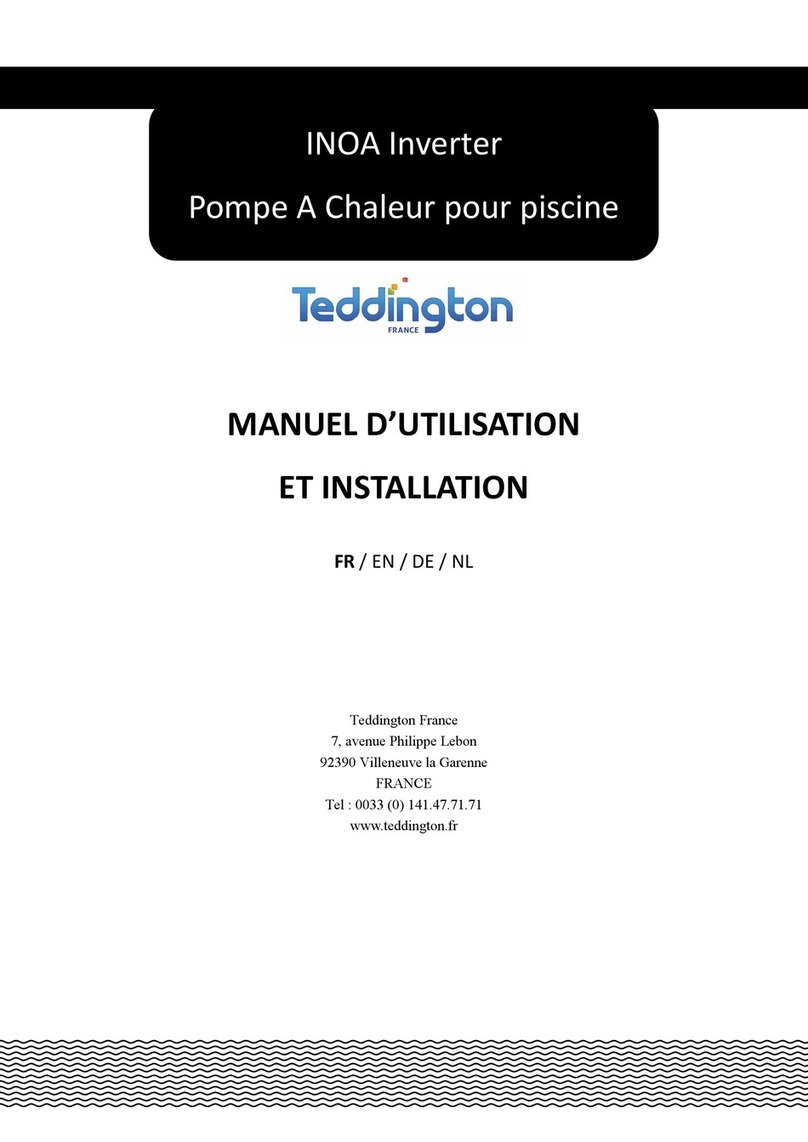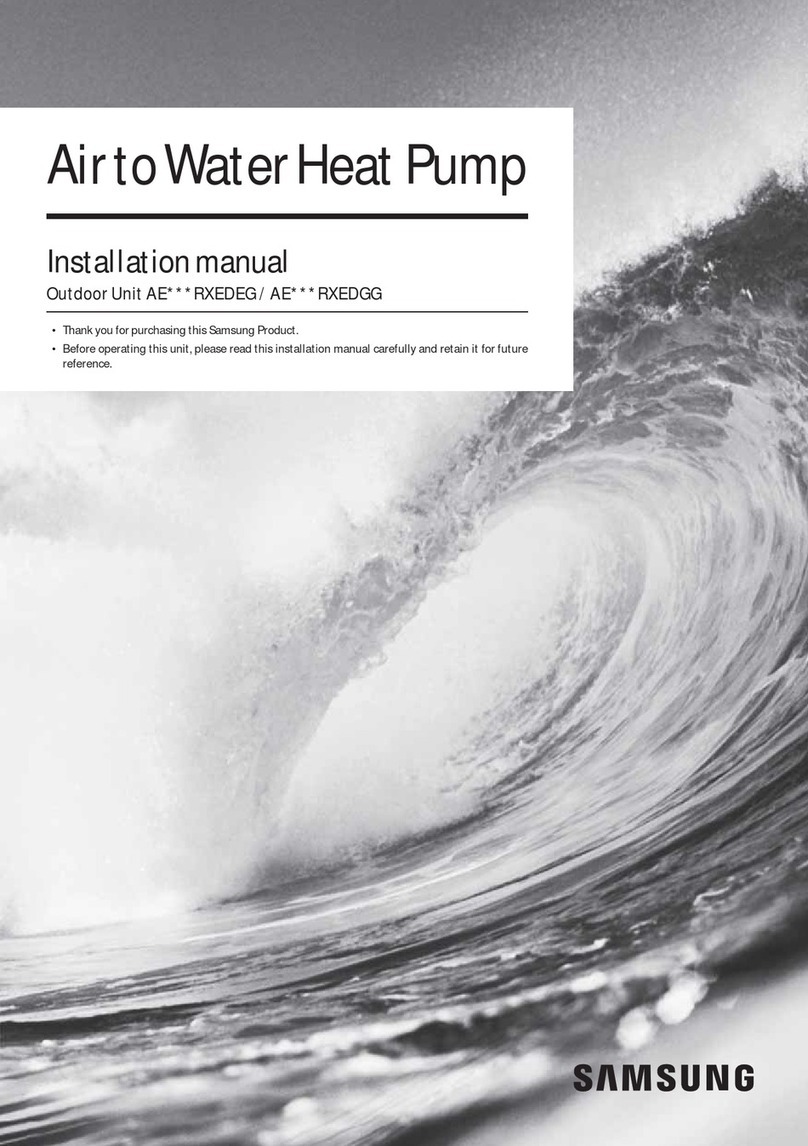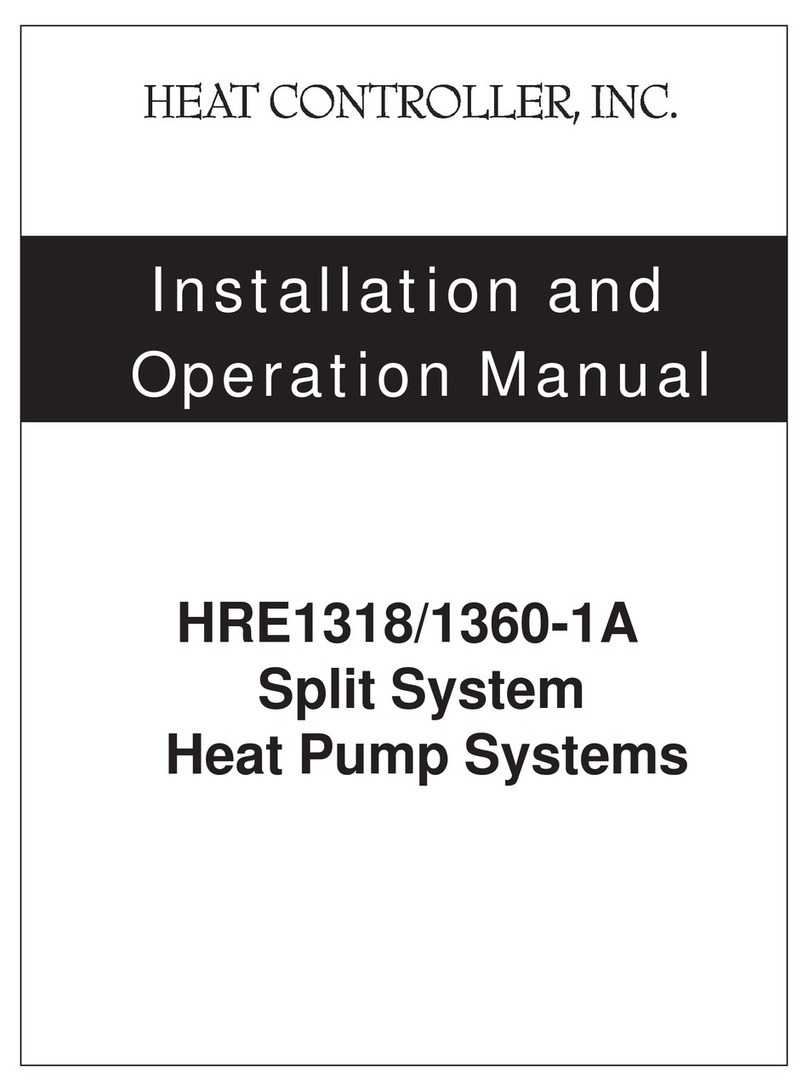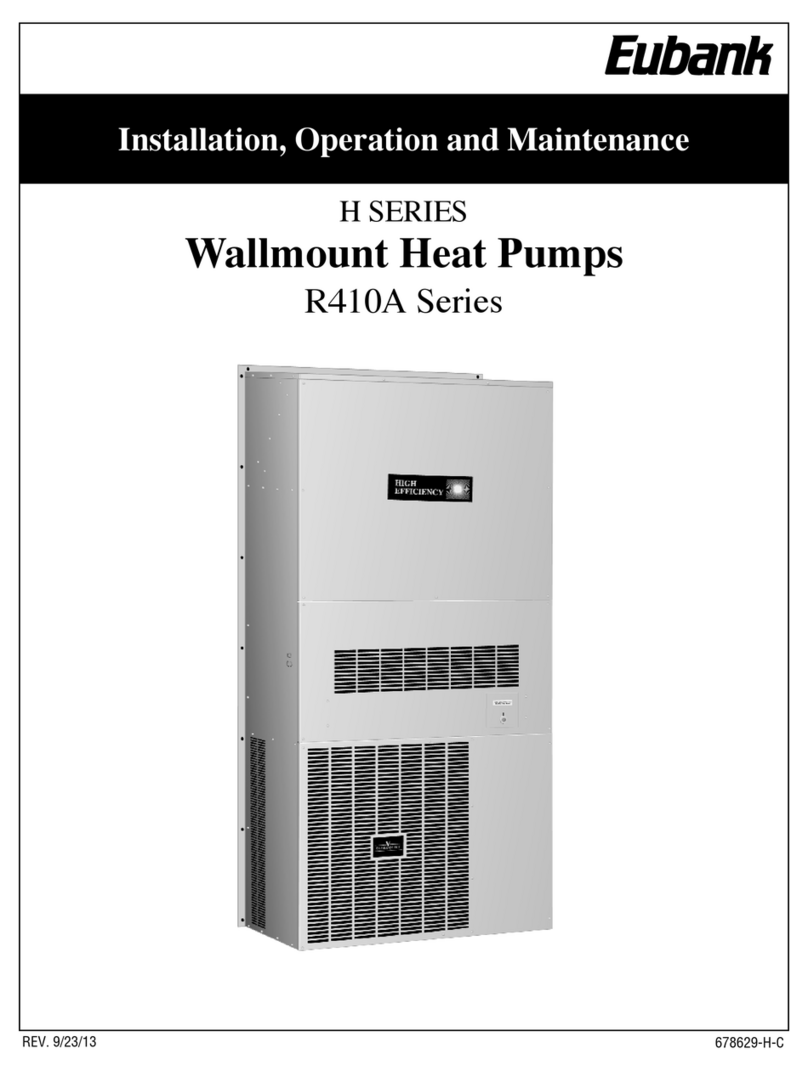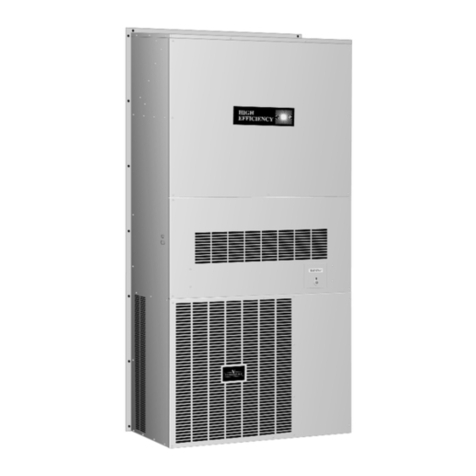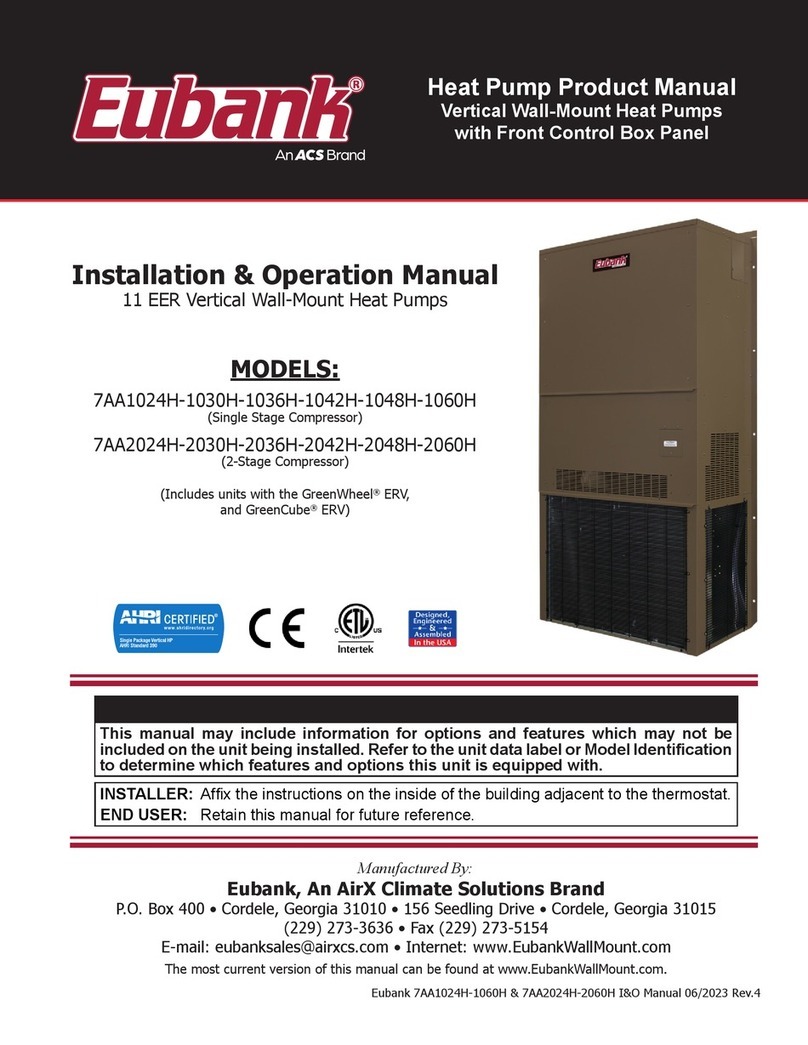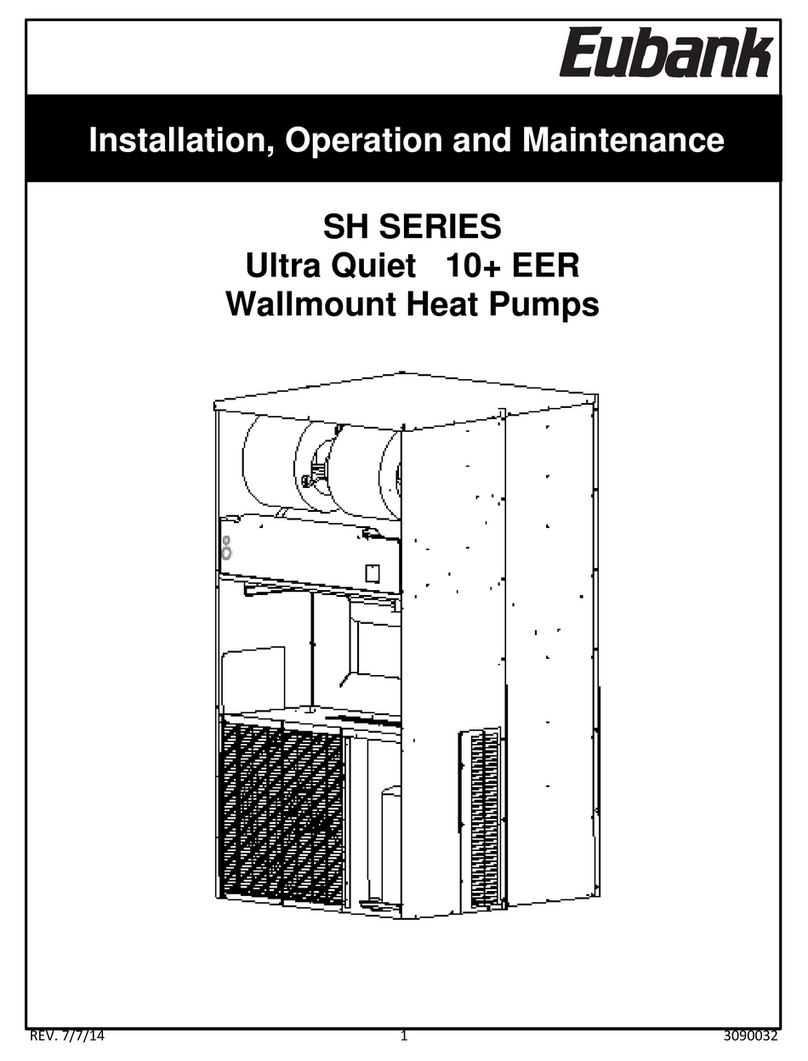
9Eubank Wall Mount Heat Pump I&O Manual
11/2021 New
The motorized damper Does NOT open when there is a call for the indoor fan (G). A 24VAC signal
{sourced from LVTB pin 10 and supplied through a user-provided Normally Open (NO) contact} activates
(opens) the Motorized Damper and connected Relief Damper. When the 24VAC signal is removed, the
Motorized Damper and connected Relief Damper close (spring return).
Note: This circuit does not interrupt the compressor or heater operation.
Configuration “N”: Barometric Fresh Air Damper (Standard)
Barometric damper capable of up to 15% of rated airflow of outside air; field adjustable, no pressure relief.
1.6 Standard Controls- PC Board
Description of Operation
The PC board controls the operation of the indoor blower, the compressor and the reversing valve while
providing high pressure, loss of charge protection with an integral defrost function. Upon a call for
mechanical cooling or heating, the controller will energize the compressor when a 24 VAC signal is
applied to the “Y” terminal provided that all time delays and fault conditions are satisfied. It will energize
the indoor blower when a 24 VAC signal is applied to the “G” terminal. The reversing valve will be
energized when a 24 VAC signal is applied to the “O” terminal. Electric heat (EH) will be energized
when a 24 VAC signal is applied to the “W2” terminal. The control will monitor the status of the loss
of charge switch and the high pressure switch. If either of these inputs recognize a fault, the compressor
will turn off and the anti-short cycle delay will be initiated. If any of these faults occur twice within a one
hour period, the control will lock the compressor out until the power is reset manually. Note: 24 VAC
power must be continuously applied to “R” and “C”.
The board will also monitor the defrost sensor. If the defrost sensor senses a temperature of 32°F while
in the heat mode, it will initiate a pin selectable 30, 60, or 90 minute delay period. (Factory set at 60
minutes). If the sensor is still calling for defrost at the end of this delay period, it will de-energize the
outdoor fan and energize the reversing valve through the RV terminals. The defrost cycle will terminate
on time or temperature. It will have a maximum defrost run time of 10 minutes, however, if the defrost
sensor registers a temperature of 50°F or higher before the 10 minute maximum run time, the defrost
cycle will terminate. The EH terminals will also be energized during a defrost cycle if the EHDD (Electric
Heat During Defrost) jumper is in the “Yes” position.
The board also provides the ability to vary the speed of the indoor blower motor (electronically commutated
motors excepted) and to select the number of seconds the blower will run after the compressor has turned
off (Post Purge). The user can select whether the compressor and electric heat operate simultaneously
(the S-Circuit) and if electric heat operates during the defrost mode (EHDD). The board can control
the operation of a two position motorized damper to provide fresh air for ventilation (DRO/DRC). In
conjunction with an optional temperature sensor, the board will modulate the speed of the outdoor fan
motor to allow cooling during low ambient temperatures.
LED’s indicate power, operating status and high pressure or loss or charge lockout.
Functions
Lockout Protection
If either of the fault conditions (LPS or HPS) occurs twice within one hour, the control board will enter
into and indicate the lockout mode. In the lockout mode, the compressor is turned off. If there is a call
for indoor air flow “G”, the blower remains energized, the alarm output is energized and the red LED
will blink to indicate which fault has occurred. When the lockout condition is cleared, the unit will reset
if the thermostat is turned “Off” and back to “On” or when the power to the heat pump is reset. With the
control board, the user can select either normally closed or normally open remote alarm dry contacts by
moving a wire on the control board. The heat pump is factory wired to be normally open.




















